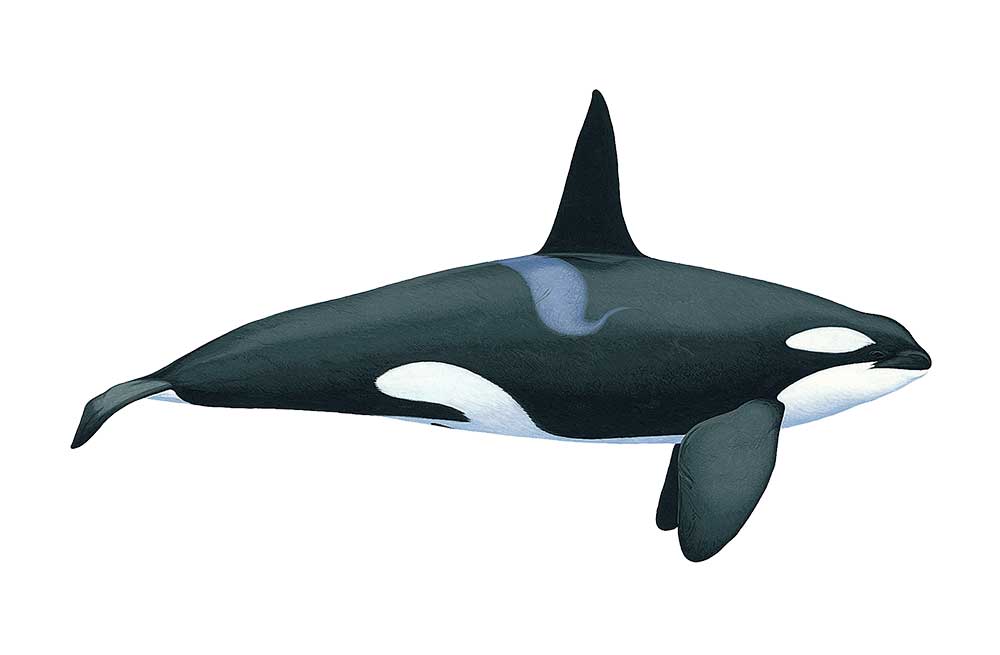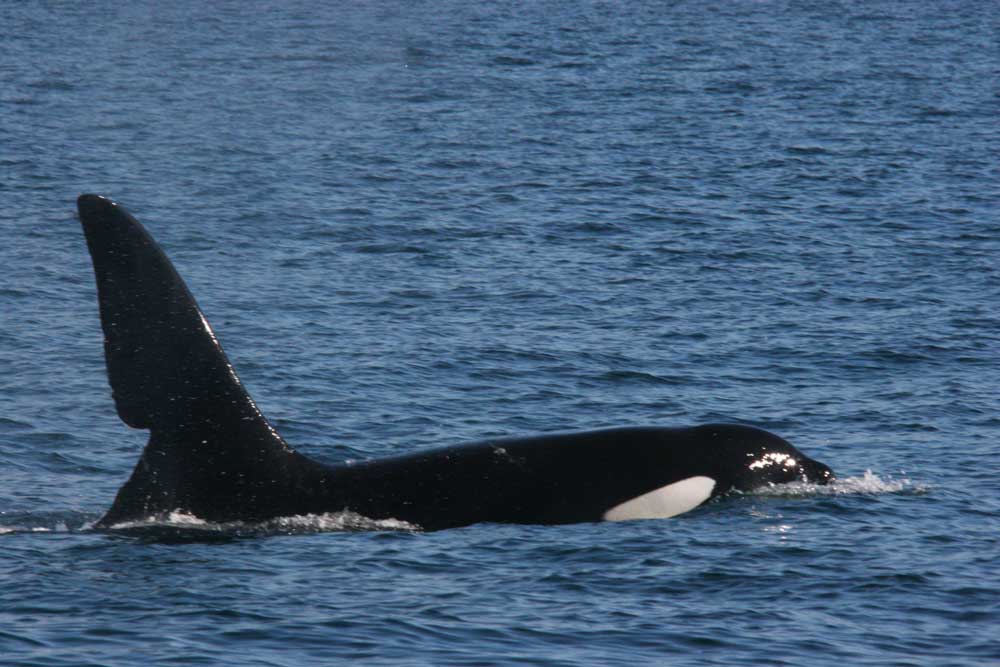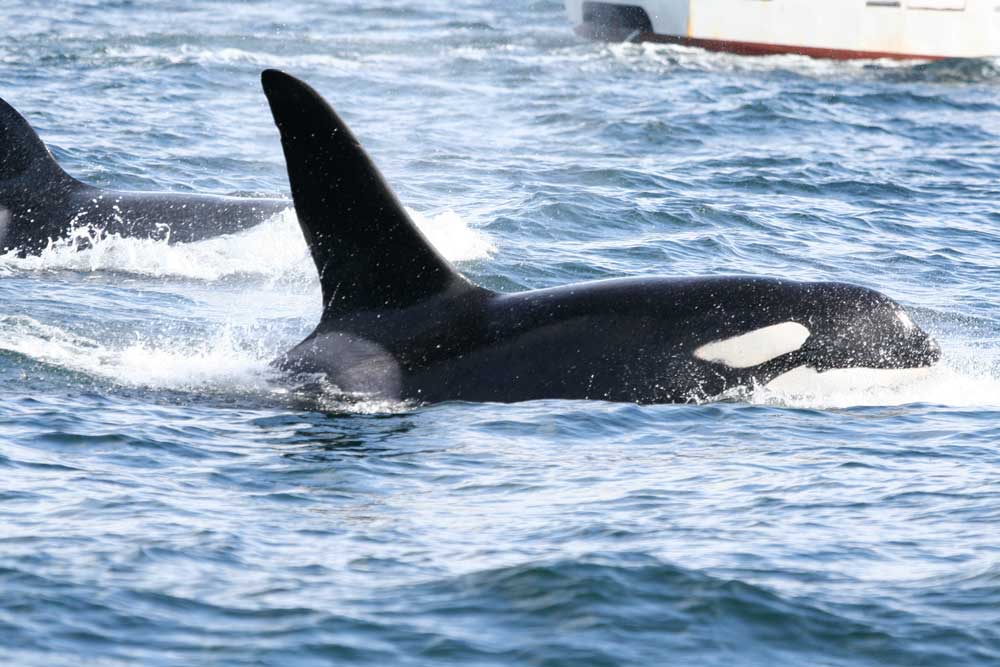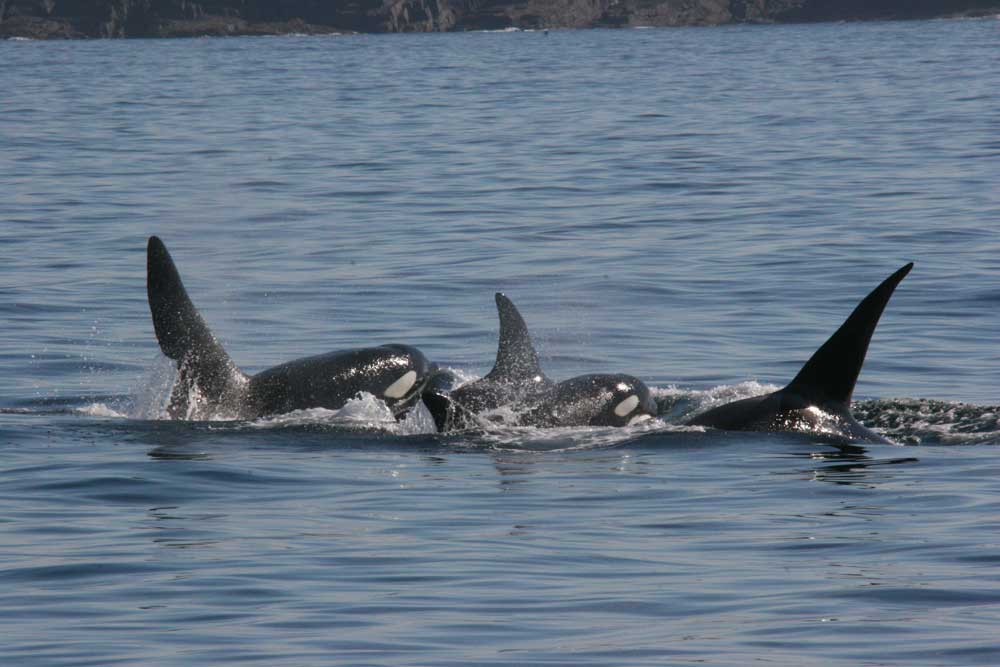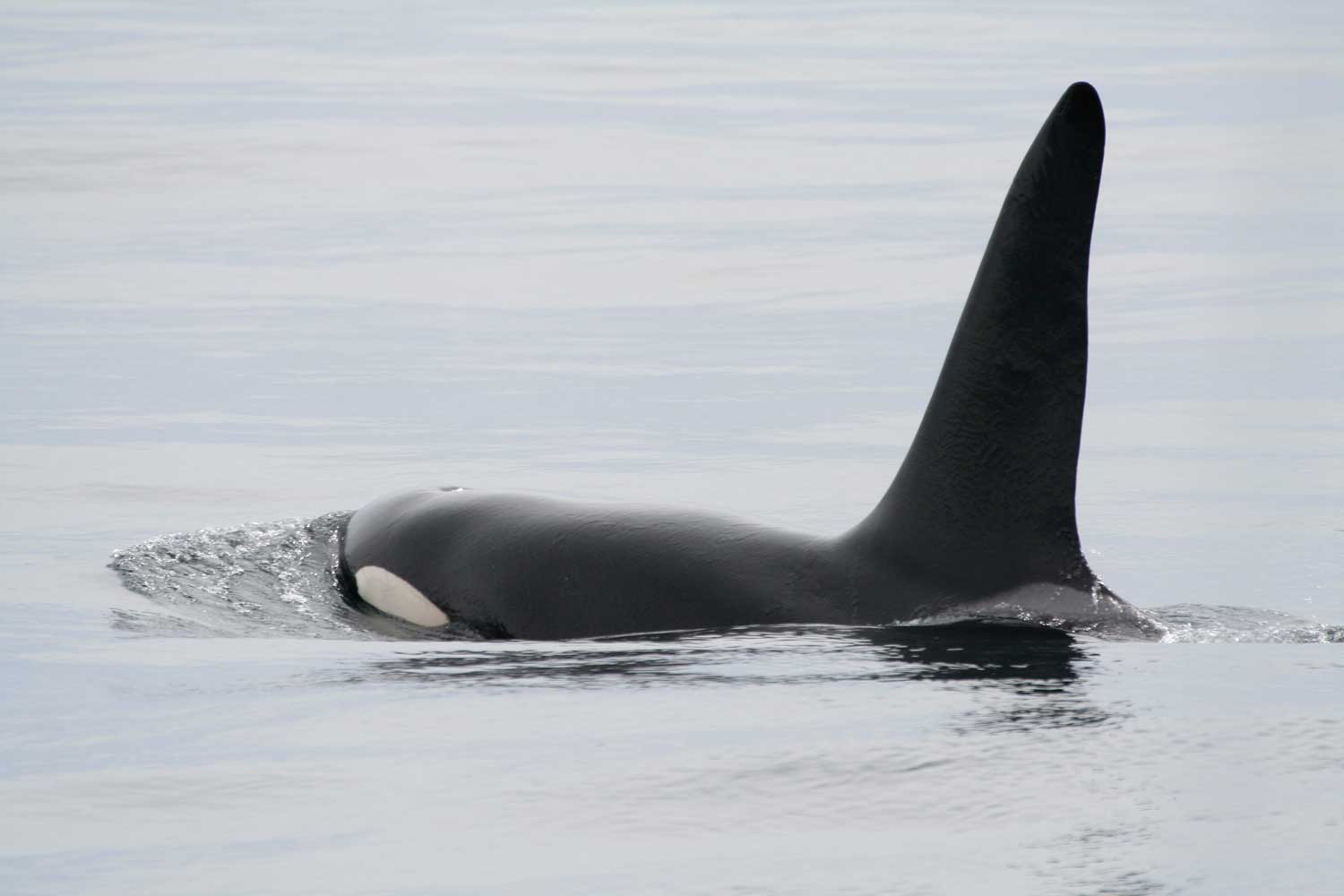
Latin: Orcinus orca
Gaelic: Madadh-cuain
CETACEAN FACTFILE:
Months: January – December
Length: Up to 9.8 metres
Range: Global distribution
Threats: Pollution, habitat degradation
Diet: Fish, squid, birds, marine mammals
PHYSICAL DESCRIPTION
Killer whales, also known as orcas, are the largest members of the dolphin family. Their size, colouration and behaviour make them very distinctive. Adult killer whales measure 5.5 to 9.8 metres in length and can live for up to 90 years; females are generally smaller and longer-lived than males. The robust body is mainly jet black, with a bright white lower jaw, side patch and eye patch. The belly is also white, as is the underside of the tail. There is a grey patch behind the dorsal fin, known as the ‘saddle-patch’. The adult males’ dorsal fin is the largest of all cetaceans at up to 1.8 metres and is an important identification feature. Females and young animals have a smaller falcate (curved) dorsal fin. Pectoral fins in all animals are paddle-shaped.
BEHAVIOUR
Killer whales are powerful swimmers capable of speeds of 35 mph, which enables them to travel vast distances in a short space of time. These animals are very intelligent and can be inquisitive and approachable. In the Hebrides, killer whales tend show lower levels of surface activity, compared to elsewhere in the world where they can be seen wake riding, breaching, spy-hopping (just the head coming out of the water) and lobtailing (slapping their tail-fin down on the water).
HABITAT AND DISTRIBUTION
Globally, killer whales are one of the most widespread cetaceans, ranging from warm tropical waters to the freezing polar regions. In the Hebrides there is a small group of killer whales called the West Coast Community, which now numbers just eight individuals, four males and four females, that can be identified by the size, shape and nicks in their dorsal fins as well as differences in their saddle-patches. The most well known and distinctive animal in this group is ‘John Coe’ who has a large chunk out of the bottom of his dorsal fin. John Coe has been regularly seen since 1992 throughout the Hebrides, but is sometimes seen off the coast of Ireland and Wales. Killer whales from Shetland, Orkney, Iceland and Norway have also been seen in the Hebrides.
FOOD AND FORAGING
The killer whale is one of the ocean's top predators. Different pods of killer whales have different feeding preferences and their prey includes fish (including cod, herring, mackerel and salmon), shark, octopus and squid, as well as birds, seals and other cetaceans. They often hunt co-operatively and in silence, especially when pursuing marine mammal prey. The West Coast Community are known to feed on other cetaceans such as harbour porpoises and one individual that stranded was found to have minke whale baleen in his stomach content. Killer whales around Shetland and Orkney have a more varied diet and have been recorded feeding on seals, schooling fish and even eider ducks.
STATUS AND CONSERVATION
As an apex predator at the top of the food chain with no natural predators, killer whales are at risk of a higher level of toxic contamination in their tissue and organs than other species. Organochlorines that end up in the ocean, such as pesticides and industrial chemicals such as polychlorinated biphenyls (PCBs), accumulate in the bodies of all marine animals because they are at the top of the food chain. Killer whales may also be affected by changes to the ecosystem, such as changes in prey availability caused by pollution and climate change.
Killer Whale Hotspot Map

